Disclosure: This article contains affiliate links. We may earn a commission from purchases at no extra cost to you, which helps our travel content.
As someone who has spent two decades examining international trade disputes, I've developed a particular fascination with how cultural heritage sites function as living archives of both commerce and community. Singapore's Chinatown stands as perhaps the most compelling example I've encountered of this duality—a neighborhood where ancient spiritual practices and mercantile history coexist within a hyper-modern smart city. During my recent sabbatical research on urban water conservation systems, I carved out a weekend to explore the lesser-known temples tucked between the more touristed streets. What I discovered was a remarkable tapestry of religious pluralism that offers profound insights into Singapore's multicultural foundations, architectural preservation efforts, and the quiet resilience of traditional practices in one of Asia's most forward-looking metropolises.
Beyond Buddha Tooth: The Temples That Tourists Miss
While the magnificent Buddha Tooth Relic Temple stands as Chinatown's crown jewel (and rightfully so), my legal training has taught me to look beyond the obvious evidence. Just as landmark cases often obscure equally significant precedents, Singapore's most famous temple draws attention away from equally fascinating spiritual sanctuaries nearby.
The Thian Hock Keng Temple on Telok Ayer Street represents Singapore's oldest Hokkien temple, constructed in 1839 without a single nail. As I stood beneath its sweeping roof ridges adorned with intricate porcelain figurines, I couldn't help but draw parallels to architectural conservation principles I'd observed in Moroccan medinas. The temple's southern Fujian design elements—brought by early Chinese immigrants—reveal how architectural styles travel across trade routes, a phenomenon I've documented extensively in my work on borderland cultures.
Just a few blocks away stands Fuk Tak Chi, Singapore's oldest Chinese temple now transformed into a museum. What struck me most was how this modest structure once served as both spiritual center and community hall for the Hakka and Cantonese immigrants—a dual function reminiscent of how pueblo communities in my native Southwest utilized ceremonial spaces. The museum's collection of artifacts offers a nuanced perspective on early Chinese immigration that contextualizes Singapore's current position as a global trade hub.
For capturing these architectural treasures properly, I relied on my travel camera, which handled the challenging lighting conditions brilliantly. The fast lens and excellent low-light performance proved essential in the incense-filled interiors.
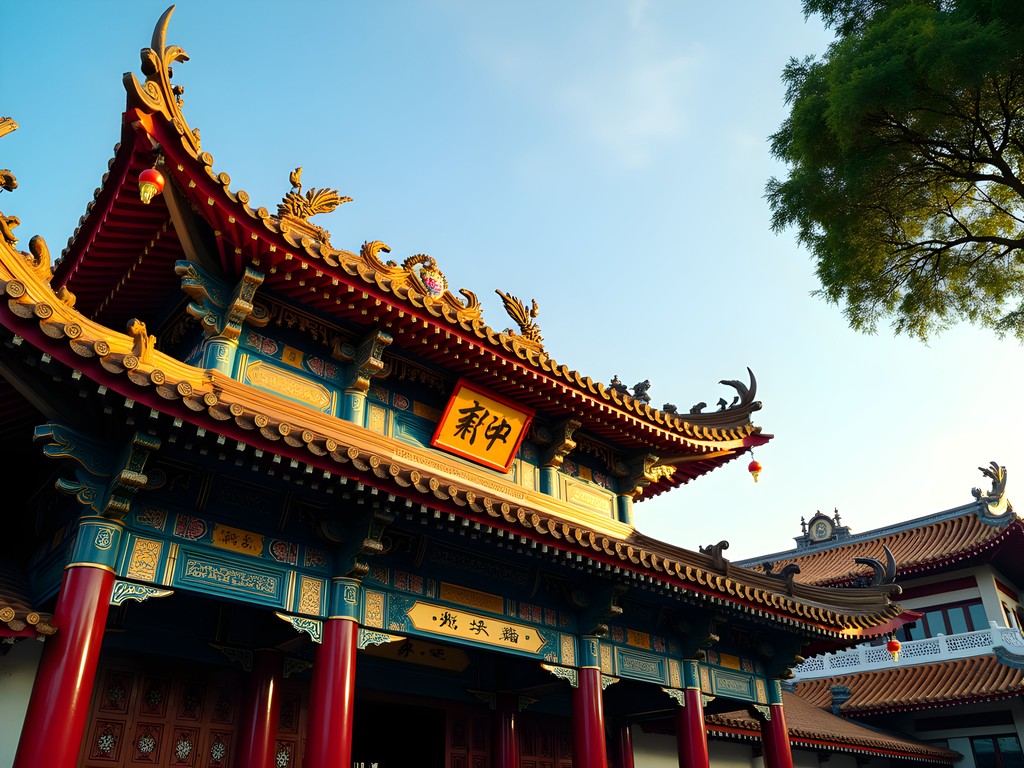
💡 Pro Tips
- Visit Thian Hock Keng early morning (before 9am) when locals come to pray, offering a more authentic experience
- Look for the maritime motifs throughout Thian Hock Keng, acknowledging the temple's historical role as a place where sailors gave thanks for safe passage
- At Fuk Tak Chi Museum, ask about the special exhibition schedule as they rotate artifacts from storage quarterly
Sri Mariamman Temple: Hindu Heritage in Chinese Territory
Perhaps the most fascinating aspect of Singapore's Chinatown is that it isn't exclusively Chinese at all. The magnificent Sri Mariamman Temple—Singapore's oldest Hindu temple—stands as compelling evidence of the neighborhood's true multicultural character. Established in 1827, this temple predates many of the Chinese structures surrounding it.
As a judge who has analyzed countless cross-border disputes, I find the legal and social frameworks that allowed this cultural integration particularly noteworthy. The temple's location speaks to Singapore's early urban planning philosophy: pragmatic coexistence rather than rigid segregation. This represents an early example of the pluralistic governance model that would eventually distinguish Singapore from other colonial port cities.
The temple's gopuram (entrance tower) rises dramatically above South Bridge Road, adorned with vividly painted sculptures depicting deities and mythological figures. Having studied similar structures in southern India, I was struck by how faithfully the architectural traditions had been maintained despite transplantation to a different climate and cultural context. The temple's weekly ceremonies—particularly the fire-walking ritual (Theemithi) held annually in October/November—continue to draw both devotees and respectful observers.
During my visit, I witnessed a morning puja (prayer ceremony) that transported me momentarily from Singapore's urban landscape to the spiritual rhythms of Tamil Nadu. The temple priests, draped in white dhotis with bare chests, moved with practiced precision between shrines dedicated to various deities, the air heavy with incense and the sound of small bells.
For those planning to visit, I recommend bringing a lightweight scarf that can serve multiple purposes—covering shoulders when entering temples (required for modesty), providing sun protection during midday walks, and even serving as an impromptu seat cushion during longer temple observations.
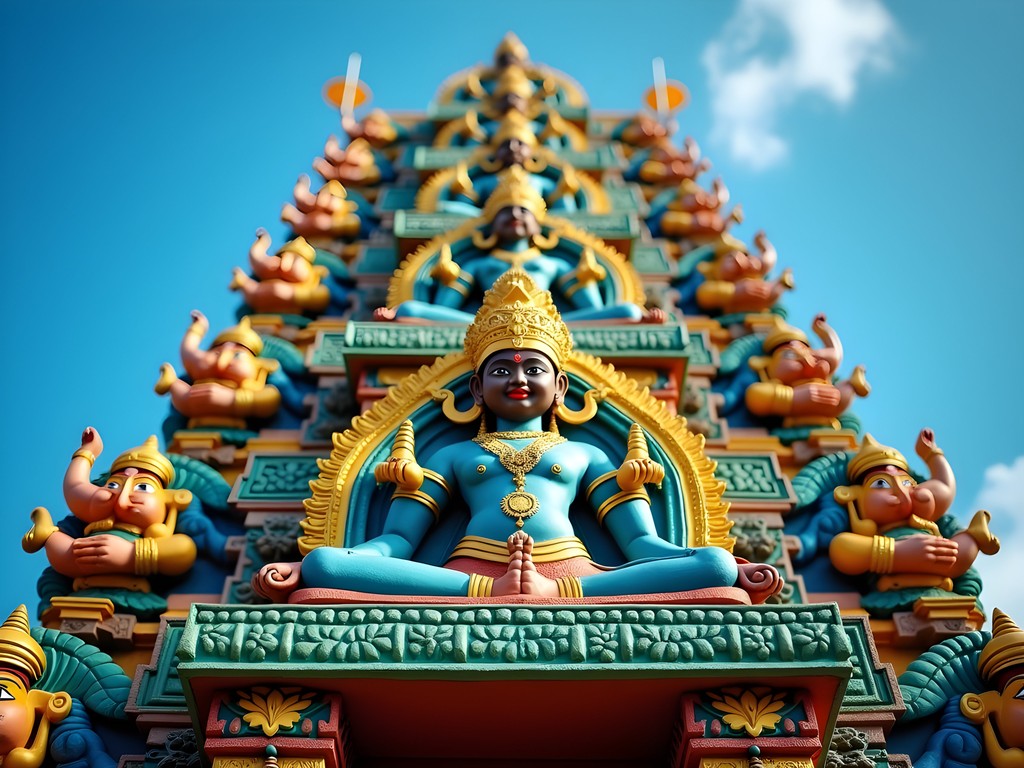
💡 Pro Tips
- Remove shoes before entering and store them at the provided racks
- Women should ensure shoulders are covered; men should avoid shorts above the knee
- Photography is permitted in the main hall but prohibited in certain inner sanctums—always ask before taking photos
Jamae Mosque: Islamic Architecture in the Chinese Quarter
Just steps away from Sri Mariamman Temple stands another architectural anomaly that further complicates our understanding of Singapore's Chinatown: the Jamae Mosque (Masjid Jamae). Built in 1826 by Tamil Muslims from southern India, this mosque represents one of the oldest Islamic structures in Singapore.
The mosque's façade presents a fascinating architectural hybrid that immediately captured my attention. Having documented similar architectural fusion in Jordan's desert cities, I recognized the distinctive South Indian-Islamic style—characterized by its two prominent minarets flanking a central Indian-style entrance gate. This design creates a striking visual dialogue with the neighboring Chinese shophouses and Hindu temple.
As someone who has studied how ancient civilizations managed shared resources in contested spaces, I find Singapore's early religious pluralism particularly significant. The proximity of these diverse houses of worship—Hindu, Muslim, Buddhist, and Taoist—within a compact neighborhood demonstrates an urban planning philosophy that prioritized functional coexistence over segregation. This arrangement facilitated what anthropologists might call "soft borders"—permeable boundaries that allow cultural exchange while maintaining distinct identities.
Inside the mosque, the prayer hall accommodates up to 1,000 worshippers. During my visit (outside of prayer times, when visitors are permitted), I noted the elegant simplicity of the interior compared to the ornate exterior. This contrast reflects theological differences regarding imagery in sacred spaces—a fascinating counterpoint to the richly decorated Hindu and Chinese temples nearby.
To navigate between these sites efficiently while protecting myself from Singapore's frequent rain showers, I carried my compact travel umbrella, which proved invaluable during a typical afternoon downpour. Its sturdy construction held up well against sudden gusts while remaining lightweight enough for all-day carrying.
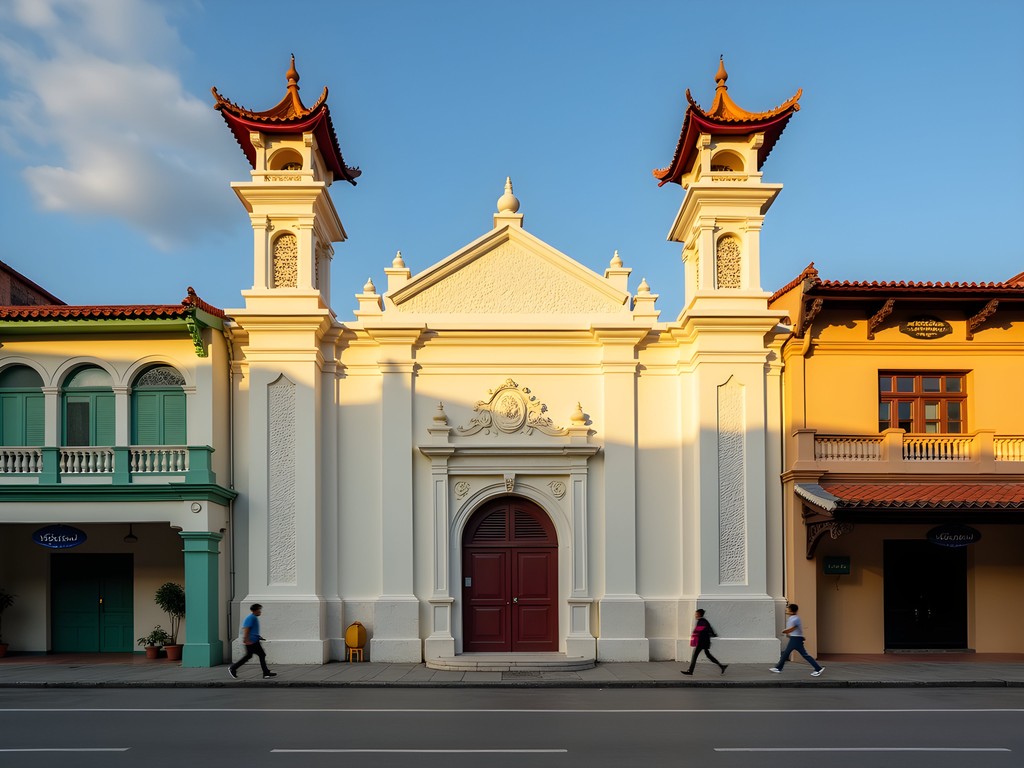
💡 Pro Tips
- Visit outside prayer times (especially avoid Friday afternoons) if you're a non-Muslim visitor
- Women should bring a scarf to cover their hair when entering
- The mosque is typically open to visitors from 10am-12pm and 2pm-4pm, but hours may vary during Ramadan
Yueh Hai Ching Temple: Maritime Heritage Preserved
Of all Chinatown's temples, Yueh Hai Ching (Temple of the Calm Sea) holds particular significance for understanding Singapore's maritime foundations. Built in the 1820s and reconstructed in 1895, this temple served as a spiritual anchor for Chinese sailors and merchants arriving in Singapore's bustling port.
Having grown up near San Antonio—a city defined by water conservation challenges—I've developed a professional interest in how coastal communities develop cultural practices around maritime resources. This temple offers compelling evidence of how spiritual practices reinforced Singapore's economic foundation as a trading port.
The temple is dedicated to Mazu (also known as Tian Hou), the Taoist goddess of the sea, and Xuan Tian Shang Di, the Taoist god of the North. These deities were particularly important to seafarers seeking protection during dangerous ocean voyages. The temple's intricate roof decorations feature some of Singapore's finest examples of traditional Chinese architectural ornamentation—a testament to the wealth generated by maritime trade and the gratitude of those who survived its perils.
What makes this temple architecturally significant is its recent restoration, completed in 2014. The painstaking three-year project utilized traditional materials and techniques, with craftsmen from China employing methods largely unchanged for centuries. As someone who has documented historical preservation efforts across multiple continents, I was impressed by the meticulous attention to authenticity—from hand-mixed lime plaster to traditional timber joinery techniques.
During my exploration of these temples, I found it essential to document architectural details and informational plaques for later reference. My note-taking journal proved invaluable for sketching architectural elements and jotting down historical dates that contextual placards often provided only in part. This analog approach sometimes reveals connections between sites that digital photography alone might miss.
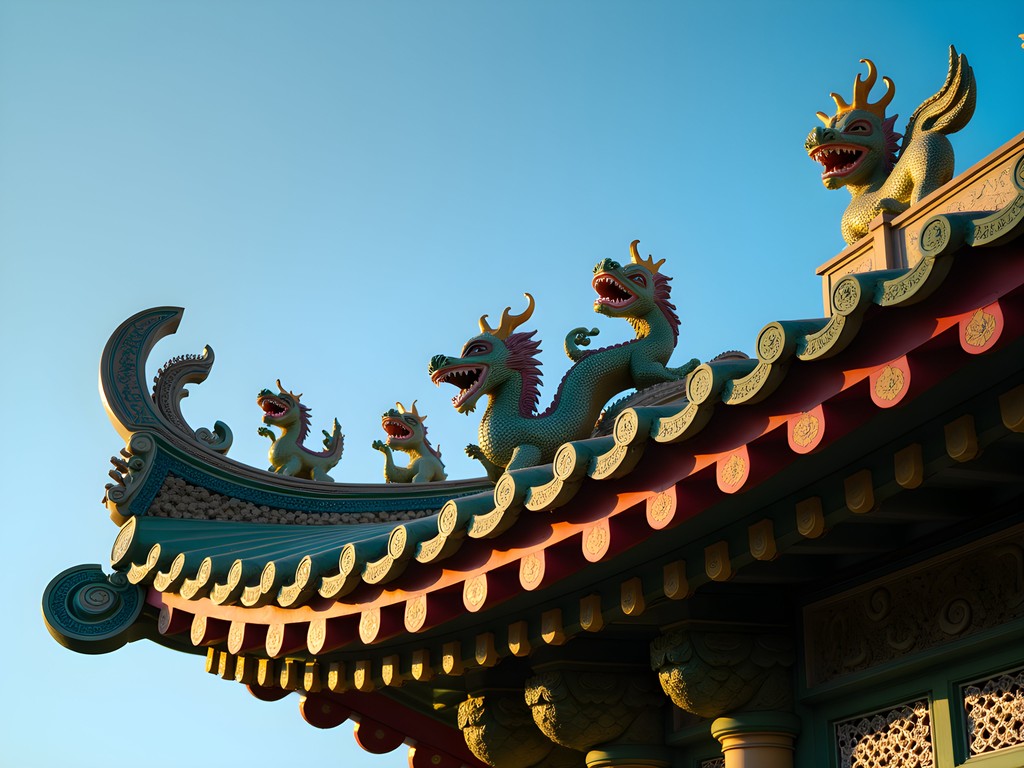
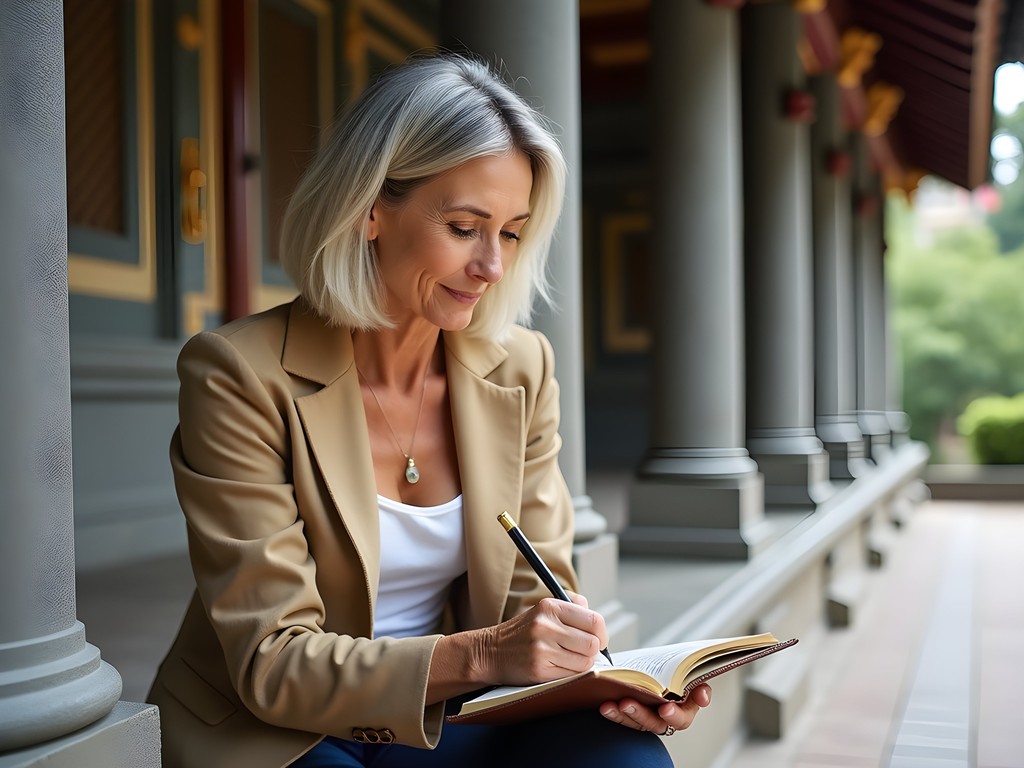
💡 Pro Tips
- Look for the ceramic figurines along the roof ridges—these 'cut-and-paste' decorations are among the finest in Singapore
- Visit in late afternoon when the light illuminates the newly restored façade most dramatically
- Check the temple's calendar for seasonal festivals when the normally quiet site becomes a hub of activity
Crafting Your Own Temple Walking Tour
After two decades presiding over complex international cases, I've learned that the most revealing evidence often comes from systematic comparison. The same principle applies to exploring Singapore's temple heritage. Rather than viewing each site in isolation, I recommend crafting a walking route that allows you to compare architectural styles, religious practices, and historical contexts.
Begin at Buddha Tooth Relic Temple—despite being relatively new (completed in 2007), it provides excellent context through its comprehensive exhibits on Buddhist art and history. From there, proceed to Thian Hock Keng Temple to witness Singapore's oldest Hokkien temple architecture, followed by a visit to Sri Mariamman and Jamae Mosque to understand how different religious traditions coexisted within the same neighborhood.
Finish your exploration at Yueh Hai Ching Temple to appreciate both maritime heritage and contemporary preservation efforts. This sequence creates a narrative arc from Buddhism to Taoism, Hinduism, Islam, and finally to the intersection of commerce and spirituality that defined early Singapore.
While Google Maps is serviceable for basic navigation, I found the Singapore travel guide invaluable for its detailed neighborhood maps and historical context not available in digital formats. The fold-out map proved particularly useful for plotting an efficient route between temples while identifying potential rest stops.
Consider timing your visits to coincide with different prayer schedules. Arriving at Sri Mariamman during morning puja, for instance, offers insights into living religious practices rather than merely appreciating architectural features. Similarly, visiting Chinese temples early in the morning often allows you to observe devotees making offerings—a reminder that these are not museum pieces but active spiritual centers.
For those interested in deeper historical context, the Chinatown Heritage Centre on Pagoda Street provides excellent background on the neighborhood's development and the diverse communities that shaped it. The recreated living quarters of early immigrants offer particularly poignant context for understanding the spiritual solace these temples provided to those facing harsh living conditions.
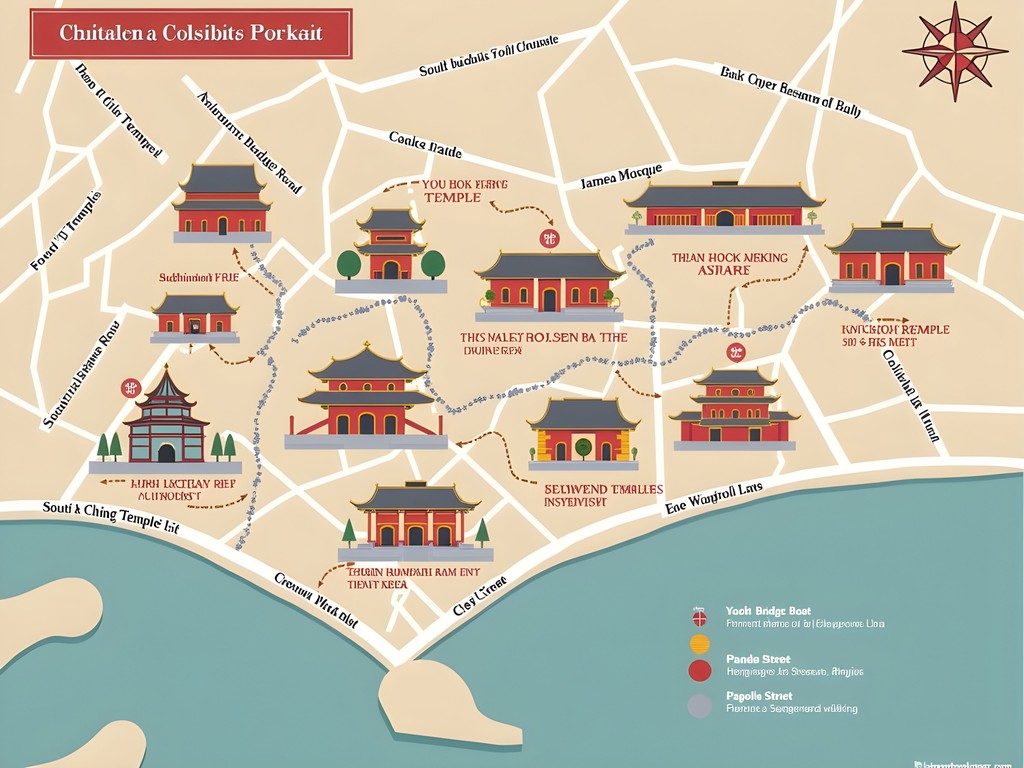
💡 Pro Tips
- Start your walking tour early (around 8am) to avoid both crowds and the afternoon heat
- Carry small denominations of Singapore dollars for making token donations at temples
- Download the 'LocoMole' app for self-guided heritage trails with additional historical information
Final Thoughts
Singapore's Chinatown temples offer more than architectural splendor—they provide a physical timeline of the nation's evolution from colonial port to global city-state. What struck me most was how these diverse religious structures, standing literally in each other's shadows, embody Singapore's distinctive approach to multiculturalism: not mere tolerance, but intentional coexistence. As someone who has studied border cultures from Morocco to Chile, I find Singapore's model particularly instructive for how ancient wisdom and modern governance can complement each other. These temples aren't merely preserved as museum pieces but continue functioning as living spiritual centers—a testament to Singapore's success in balancing preservation and progress. I encourage you to explore these sacred spaces with both curiosity and respect, allowing yourself to step momentarily outside the city's relentless modernity and into the timeless rhythms that have sustained diverse communities for generations.
✨ Key Takeaways
- Singapore's Chinatown contains not just Chinese temples but Hindu and Muslim places of worship, reflecting the area's true multicultural character
- The proximity of diverse religious structures demonstrates Singapore's early urban planning philosophy of functional coexistence
- Many temples have direct connections to maritime trade, reflecting Singapore's foundation as a port city
- Visit during morning hours to observe active worship practices rather than just appreciating architectural features
📋 Practical Information
Best Time to Visit
year-round, but February (Chinese New Year) offers special celebrations
Budget Estimate
$0-30 SGD (most temples are free but accept donations)
Recommended Duration
4-5 hours for comprehensive exploration
Difficulty Level
Easy - Flat Terrain With Short Walking Distances Between Sites
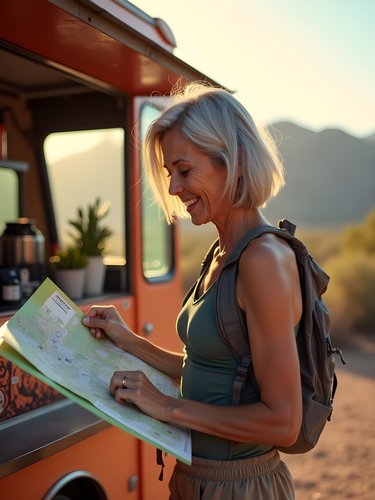















Comments
greenguy
Just got back from Singapore and followed your temple route - AMAZING experience!! The Yueh Hai Ching Temple was my absolute favorite - those intricate roof decorations are mind-blowing when you see them up close. One tip for others: I found using the Singapore Pocket Guide super helpful for the historical context of these sites. Also, don't miss the traditional Chinese medicine museum nearby - fascinating complement to the temple visits. Thanks Samantha for highlighting these less-visited spots!
starrider
Oh nice tip about the medicine museum! How long did that take to visit?
greenguy
About an hour if you read everything. They have free guided tours at 11am and 2pm that are worth catching!
bluelegend4273
Going to Singapore next month for a 3-day stopover. Is it possible to see all these temples in one morning? Also wondering about food recommendations in Chinatown? Great post btw!
greenguy
Not the author but I did this walk last month! Definitely doable in a morning if you start early. For food, don't miss the Chinatown Complex Food Centre - the Michelin star soya chicken rice stall is there and totally worth the queue!
bluelegend4273
Thanks so much! Adding that food center to my list for sure.
Jean Wells
Samantha, I appreciate how you've highlighted the multi-religious aspect of Singapore's Chinatown. As someone who's lived in Asia for over 20 years, I find Singapore's religious harmony particularly fascinating. The Sri Mariamman Temple was a highlight during my last visit - the detailed craftsmanship on the gopuram is spectacular, especially in late afternoon light. I'd add that visitors should be aware of proper temple etiquette: shoulders covered, no shorts, and remove shoes before entering. The temple caretakers are quite understanding of tourists but appreciate the respect.
bluelegend4273
Thanks for the etiquette tips Jean! Would you recommend visiting during any particular festivals?
Jean Wells
Absolutely! If you can time your visit during Thaipusam (usually January/February) or Deepavali (October/November), the temple is particularly vibrant. Just be prepared for crowds.
starrider
Love this! Visited Singapore last year but totally missed these hidden gems. Putting them on my list for next time!
globetrotter88
Your photo of the Yueh Hai Ching Temple is incredible! The detail on those roof decorations is amazing.
sunsetstar
Love how you captured the religious diversity in such a small area! The photos are gorgeous too. Adding this to my Singapore itinerary for sure!
escapetime
Make sure you visit early morning for the best lighting for photos and to beat the crowds!
escapetime
Just got back from Singapore and did this exact walk! Pro tip: there's a fantastic traditional kopi (coffee) shop called Ya Kun Kaya Toast near the Buddha Tooth temple. Perfect spot to recharge between temple visits. Also, I found using the Singapore Walks really helpful for the historical context of each site. The maritime connections at Yueh Hai Ching Temple were fascinating - loved how you tied that to Singapore's trading history, Samantha!
Douglas Bradley
Samantha, this is exactly the kind of nuanced cultural exploration that's missing from most Singapore guides. I particularly appreciated your insights on Sri Mariamman Temple and how it represents the intersection of different cultural communities. When I visited last year, I was struck by how the temple priests would explain the Hindu traditions to Chinese visitors. It's a perfect example of Singapore's multicultural identity in action. One thing I'd add for readers - the Chinatown Heritage Centre near Pagoda Street provides excellent historical context before doing this temple walk. They have reconstructed living quarters showing how early Chinese immigrants lived. Makes the temple visits even more meaningful when you understand the community's struggles.
sunsetstar
Is the Heritage Centre suitable for kids? Taking my 8-year-old next month.
Douglas Bradley
Absolutely! They have interactive exhibits that kids usually enjoy. The recreated living spaces are like stepping into a time machine. Just be prepared to explain some of the harsher historical realities in kid-friendly terms.
wildlegend
Great post! I'm planning to visit Singapore in November. Is the monsoon season a bad time to do this walking tour? Anyone done it during rainy season?
Douglas Bradley
I was there last November actually. The rain typically comes in short, heavy bursts in the afternoon. If you start your walk early morning (around 8-9am), you can usually finish before the downpours begin. Also, many of the temples have covered areas where you can wait out a shower. Bring a small umbrella regardless!
wildlegend
Thanks for the tip! Early morning it is then.
TravelWithMike
Just did this walk last week! Pro tip: there's an amazing little tea shop right across from Jamae Mosque where you can rest and rehydrate. The owner knows so much about the neighborhood history too!
summerexplorer
Ooh thanks for this! What's the tea shop called? Definitely want to check it out.
TravelWithMike
It's called Tea Chapter! Small place, easy to miss but worth finding. Try the oolong!
Venture X
Premium card with 2X miles, $300 travel credit, Priority Pass